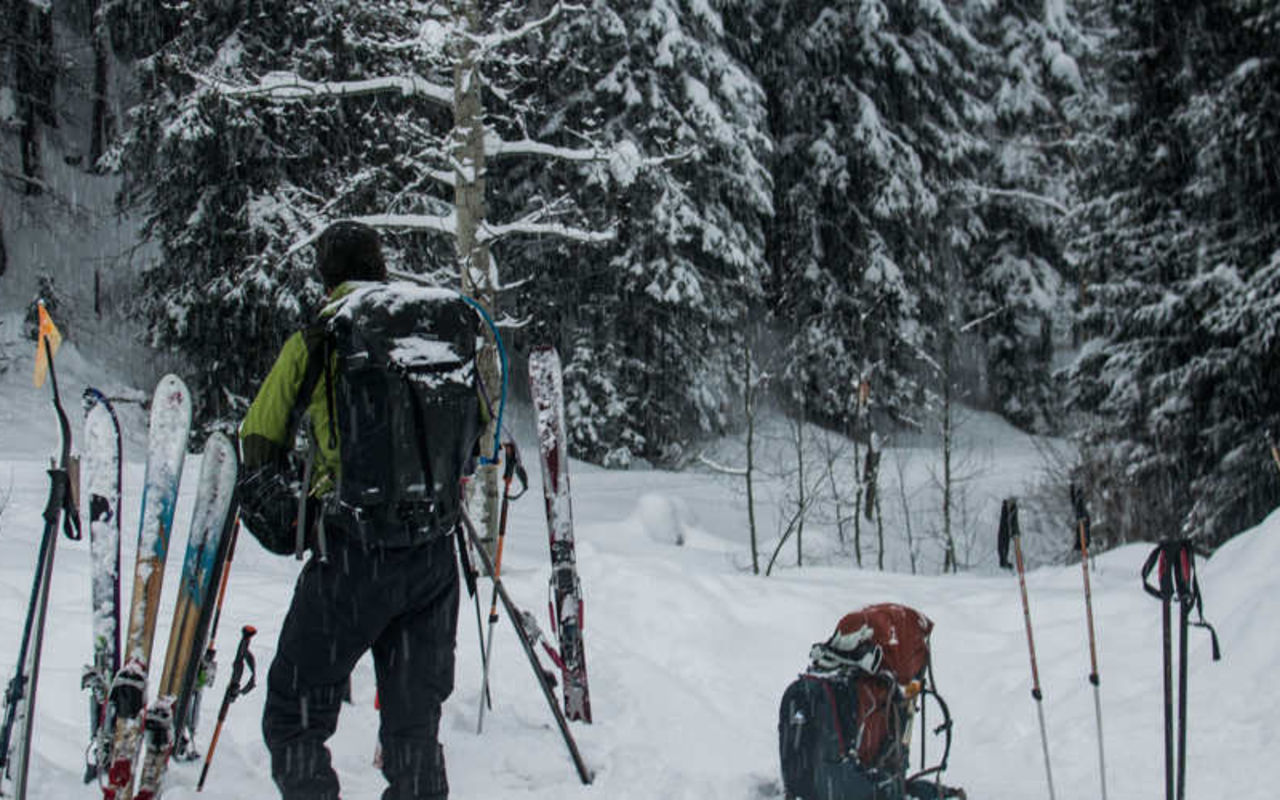Backcountry Skiing
Backcountry skiing — aka ski touring, alpine touring, ski mountaineering, randonnée — is on the rise in Utah for its compelling mixture of exercise, adventure, first tracks, freedom and being free (once you’ve bought all the gear…). Here’s a primer for skiers ready to earn their turns, put some skin(s) in the game, etc.
WHAT IS BACKCOUNTRY SKIING?
Backcountry skiing is the opposite of frontcountry skiing. Not helpful? Because we just made up the word ‘frontcountry’? Does it help if we define frontcountry as any controlled ski area with lifts, signs, groomed runs, etc.?
Think of backcountry skiing as analog skiing, tackling the mountain in its natural, uncontrolled state. Hiking up hills and finding your own first tracks. Heli-skiing and side country/lift-accessed backcountry skiing count, but backcountry in its purest form is human-powered.
WHO BACKCOUNTRY SKIS?
Who is backcountry skiing right for? People who like trail running and mountain biking in the warmer months. People who love powder enough to climb up a hill for it. The mildly masochistic segment of the ski bum set.
Truth is, anyone can do it. It’s hard work, but it isn’t hard to pick up — especially if you already have some experience with downhill and/or cross-country skiing.
REQUIRED GEAR
Lots of choices for skis and bindings depending on your focus, ranging from ultra-light rigs that let you race uphill to more substantial models for more fun on the descents. Alpine touring skis are the most popular style, wider and lighter than traditional downhill skis, made of carbon fiber or lighter woods. Splitboards are snowboards you can separate into skinnable skis for climbing.
Touring bindings allow a free heel for climbing that can clip in for descents. Touring boots have an unlockable ankle for freer motion when climbing.
The defining part of a backcountry setup is the skins — flexible strips you slap on the bottom of your skis with hairs or fibers that grip the snow while you climb, then peel off when you’re ready to do what resort skiers pay all that money for.
Lastly, and most essential is the safety gear…
SAFETY FIRST
Backcountry skiing is like rock climbing and falling in love: The same thing that makes it fun makes it dangerous. You’re out in it, away from the crowds, away from the ski patrol and avalanche control. Take an avalanche safety course and always check local avalanche conditions before you head out. If you’re just starting, go with someone who knows what they’re doing to learn the ropes.
If you see someone ski touring without a backpack, you can check the IDIOT box on your Backcountry Bingo card. Carry food, a shovel, extra warm clothes, a probe and a beacon at a minimum.
WHERE TO BACKCOUNTRY SKI
The point of backcountry skiing is you can pretty much go anywhere you want (though private property laws still apply…). Some people gravitate toward the resorts since they’re bound to be in the areas with the most snow, though you’ll want to check their policies on walking up the hill.
Utah native and Rad-Older-Brother archetype Layne Caldwell, who contributed anything useful you’ve read above, offers these observations: “The resorts in Big and Little Cottonwood Canyons already own the prime north-facing ski terrain, but there are many side canyons that still offer great skiing in the Central Wasatch. I like skiing in Davis County as well. I’ve also skied in the Bear River Range, the Deep Creek Range, and the Uintas.”
See also: Red Baldy (west of Snowbird), Greens Basin (near Solitude), Mill D (south face of Big Cottonwood), Bountiful Peak (via Farmington Canyon), Ben Lomond and Willard Peaks (Ogden), Logan Peak, La Sal Pass (near Moab), Delano Peak (near Beaver).
GUIDES & RENTALS
Related Articles
Backcountry Skiing | Photo Gallery


Utah Backcountry Skiing
Articles
View AllA 7-Day, Budget-Friendly Utah Family Ski Vacation
Snowbasin offers a perfect location for an affordable family ski vacation. Check out this 7-day itin...
4 Tips For a Foolproof Family Ski Vacation in Utah
If you are trying to plan a family ski trip visit Utah.com to create the perfect itinerary. Utah has...
Salt Lake: Ski More, Do More, Save More
Salt Lake City is one of the best ski towns because it has the best snow on earth and it has some of...
Skiing and More: Utah's 10 Best Winter Destinations
Winter is what made Utah famous. Check out the 10 best places to stay and visit in Utah during the w...
Top Three Runs at Utah Ski Resorts
Find the top ski runs at Alta, Deer Valley, and Snowbird ski resorts. Find the best ski resorts and ...
5 Ways to Ski More for Less
Planning a ski trip is exciting but the costs can add up fast. Check out the different ways you can ...
Master the art of beginner skiing: 4 Tips for Novice Skiers
Are you learning to ski? Utah is one of the best places for beginner skiers. Read on to find importa...